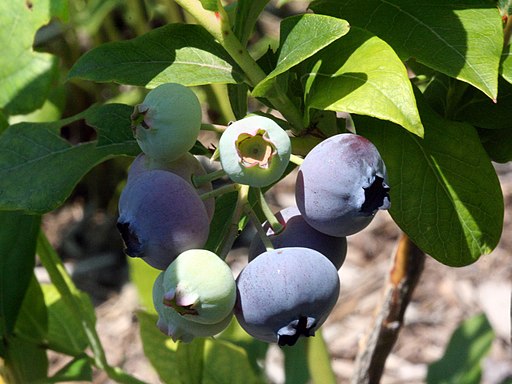Highbush blueberry (Vaccinium corymbosum)
Description
Highbush blueberry is a perennial deciduous shrub found in swampy areas and higher altitude forests. It has simple oval leaves with alternate arrangement. The leaves turn from reddish green to blue-green in the summer and a variety of colors ranging from yellow to purple in the fall. Clusters of small pink or white flowers appear in spring. Fruit ripens in late summer.
Gardening Tips
| Care | Known Problems | How to Harvest | Mature Size | Notes/Uses |
|---|---|---|---|---|
| Plant in moist, well-drained acidic soil in full sun or partial shade; In the first and second year after planting, remove the flowers to encourage growth; Prune as needed | Some pathogens of Highbush blueberries include stem blight, root rot, and mildew, though these seldom occur; Soil that is too alkaline will cause leaf yellowing | Pick berries as they ripen in the summer | Up to 12 feet in height and 10 feet in width | Birds, deer, black bears, rabbits, and humans eat the berries, which have ample iron; Butterflies and bees pollinate the flowers and feed on the nectar; Highbush blueberries are planted in a variety of gardens and used as ornamental plants and as border plants |



